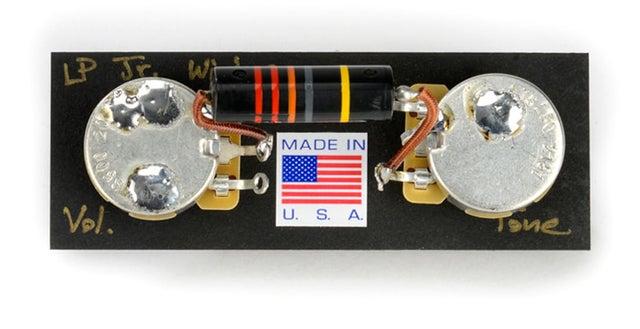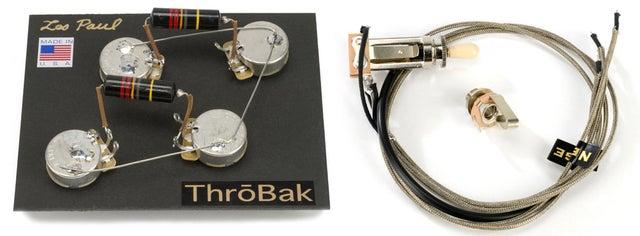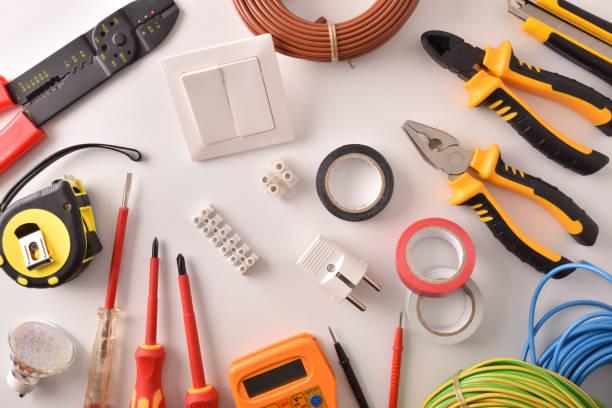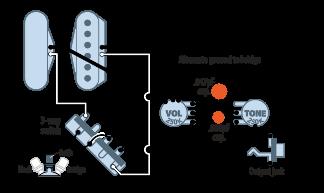Introduction to 50s Les Paul Wiring
With decades of experience in instrument design, I’ve had a front-row seat to the magical transformation that 50s Les Paul wiring can bring to a guitar’s sound. From working with a multitude of musicians and collectors to diving deep into the nuances of vintage tone, I’ve seen it all. The beauty of 50s wiring lies not just in its ability to breathe new life into your guitar, but in how it encapsulates that iconic sound so cherished by enthusiasts worldwide. Over the years, I’ve consulted with seasoned luthiers, experimented with various configurations, and picked apart the golden-era magic that makes this wiring style stand out. Common concerns like getting that authentic vintage tone or choosing between vintage and modern wiring often bubble to the surface, and I’m here to address these head-on with practical insights. Let’s delve into what makes this wiring setup remarkable—and why experts often keep it under wraps until now.
Understanding 50s Wiring Configuration

Understanding the 50s wiring configuration is like opening a time capsule of tonal history that effortlessly bridges the past and present. As a luthier immersed in the intricacies of guitar crafting, I find the vintage design both fascinating and instructive. What makes the 50s wiring configuration unique in the world of guitar electronics? It’s a question that every Les Paul enthusiast eventually asks. The secret lies in the way the controls are wired, a seemingly minute detail that dramatically impacts the tonal quality of the instrument.
When I first explored the 50s wiring in my workshop, I discovered its simple elegance. Unlike modern configurations, the tone and volume controls are uniquely interconnected, preserving high frequencies even when you roll back the volume—an aspect that enhances dynamic range and clarity. This enables guitarists to maintain their distinct voice, from mellow jazz tones to biting blues screams, without sacrificing the integrity of their sound.
My technical background allows me to appreciate how this wiring system respects the original sonic intentions set out by the pioneers of the Les Paul. It’s more than nostalgia; it’s about achieving a timeless tonal character that resonates with today’s musicians. As we dive deeper into this wiring era, its lasting influence on guitar design becomes unmistakably clear, laying down the groundwork for any guitarist seeking that classic Les Paul sound.
Why Choose 50s Wiring Over Other Styles

Could choosing a vintage wiring style be the key to unlocking your guitar’s true potential? As someone who has spent countless hours immersed in the world of guitar tones, I can confidently say that 50s wiring isn’t just a stylistic choice. It’s a pathway to achieving that elusive, authentic vintage sound that so many of us crave. My background in acoustics has shown me how critical the subtleties of wiring are to the overall tonal quality of an instrument. I’ve witnessed firsthand how 50s wiring can breathe life into Les Pauls, delivering a richness and clarity that modern configurations often miss.
Choosing 50s wiring is about more than nostalgia; it’s about precision and passion. When you roll back the tone knob, for example, instead of muddying the sound, it retains its clarity and character. This isn’t just about replicating the past; it’s about enhancing the present, ensuring each note you play resonates with depth and authenticity. My experiences have taught me that those small, seemingly minute details in wiring can create significant differences in sound. In a world where every touch and turn matters, embracing the 50s style can transform your Les Paul into a powerhouse of tonal excellence.
How to Wire Your Les Paul Guitar
Materials Needed for Wiring

What essential components are necessary for achieving a professional-quality Les Paul wiring job? Over my years of experience, I’ve fine-tuned the list of essentials to ensure flawless 50s Les Paul wiring. A comprehensive wiring kit is your baseline—consider it the backbone of this process. Sourcing high-grade volume pots ensures smoother volume control and overall tonal integrity. Don’t underestimate the importance of superb tone controls; they define the essence of the Les Paul’s characteristic sound.
From my perspective, having meticulously sourced materials for numerous instruments, I know the nuances that set apart a mediocre job from a professional finish. Choosing components that are both time-tested and respected in the community speaks volumes. Your wiring setup provides not just functionality, but also longevity. Thus, rely only on trusted brands and components to respect the craftsmanship of your Les Paul. With these materials in hand, you’re ready to proceed to the step-by-step wiring instructions, transforming theory into practice.
Step-by-Step Wiring Instructions

Are you ready to explore a detailed wiring process that can elevate your Les Paul’s sound? Let’s dive into the step-by-step wiring instructions, a vital part of optimizing PAF humbucker wiring on your Les Paul. From my experience as an engineer and luthier, I know that understanding the intricacies of wiring can dramatically enhance your guitar’s sonic capabilities.
First, we start by preparing our push-pull pots—critical in achieving that authentic ’50s tone. These pots allow for added versatility, enabling coil-splitting options that weren’t available in the original models. My approach simplifies circuit analysis, ensuring even novices can achieve professional results.
Begin by mapping out each component. With precision, unscrew the backplate, and disconnect any old wiring. Now, with the detailed schematic in hand, insert the new wire through the entry point of the body. This process requires patience and accuracy; any slip can lead to tonal inconsistencies. By soldering the connections meticulously to each pot and pickup, and ensuring each ground wire is secure, you’ll achieve that rich, vintage sound that celebrates the classic Les Paul heritage.
As we transition into a comparative analysis of wiring options, recognizing the rewards of these steps becomes clear. By faithfully following each instruction, you’re not merely preserving tradition—you’re innovatively enhancing it.
Comparative Analysis of Wiring Options
Vintage Wiring Vs. Modern Wiring

As an expert immersed in the evolution of guitar electronics, I have witnessed firsthand the compelling aspects of both vintage and modern wiring approaches. The question that often arises is: What can the history of guitar wiring teach us about today’s popular options? To properly assess this, we need to delve into the nuances of 50s Les Paul wiring, a pivotal benchmark in guitar history renowned for its distinctive tonal quality.
By examining 50s Les Paul wiring, I uncover why vintage methods might offer unique tonal benefits that modern setups struggle to replicate. This configuration draws on the use of independent volume controls and interactive tone pathways, producing a rich, warm sound that aficionados love. In comparison, modern wiring, emphasizing convenience and reduced noise, often sacrifices some of the nuanced sound that vintage enthusiasts seek. My exploration reveals that while modern wiring caters to the demands for efficiency, it’s the vintage setup’s dedication to tonal fidelity that truly captivates the discerning ear.
In the following sections, I will guide you through a more detailed comparative analysis, illuminating the varied pathways these wiring options present. Join me as we further unveil the tonal secrets that lie within the heart of this classic instrument.
Pros and Cons of Different Wiring Styles

As both a luthier and an engineer, I have examined numerous wiring styles, each with its own distinctive advantages and drawbacks. My direct involvement in guitar modification has taught me that the choice between vintage and modern wiring hinges largely on tonal preferences and playability. You might ask: Are the perceived benefits of vintage wiring worth the drawbacks compared to modern styles? This question cuts to the heart of comparative analysis and demands a deeper exploration of wiring diagrams and their practical implications. Vintage 50s Les Paul wiring, for example, can enhance tonal clarity and maintain treble even at lower volumes, a notable win for purists chasing that classic rock sound. However, it often requires meticulous attention to the wiring diagram and may not support the versatility that modern players need. Modern wiring styles, while sometimes sacrificing that vintage touch, offer enhanced versatility and simpler configurations. Understanding these nuances helps ensure that your decision aligns with your personal playing style and tonal aspirations, honing in on both expert insights and hands-on experience.
FAQs
What is 50s Les Paul wiring?
Why do some guitarists prefer 50s Les Paul wiring?
How does 50s wiring differ from modern Les Paul wiring?
Can I convert my modern wired Les Paul to 50s wiring?
Conclusion
Could the secrets of 50s wiring be the missing piece in your guitar’s performance puzzle? Reflecting on years of lutherie experience, I can confidently say that embracing 50s Les Paul wiring can revolutionize your instrument’s dynamics. Understanding 50s wiring configuration reveals its subtle yet profound impact on tone, allowing for cleaner and more transparent sound. Why choose 50s wiring over other styles? It maintains tonal clarity despite volume changes—an edge vintage enthusiasts cherish. By diving into guitar modification with the right materials and techniques, you unlock your Les Paul’s true potential. The journey of discovery through vintage wiring complexities transforms both sound and spirit.

R.M. Mottola, an engineer-turned-luthier, revolutionizes stringed instrument design with his deep focus on acoustics and ergonomics since 1994. As editor of the Savart Journal and a key contributor to American Lutherie, Mottola merges science with artistry in lutherie. He enriches the field with his extensive knowledge, shared through his Liutaio Mottola website, making him a beacon in the world of modern instrument craftsmanship.
